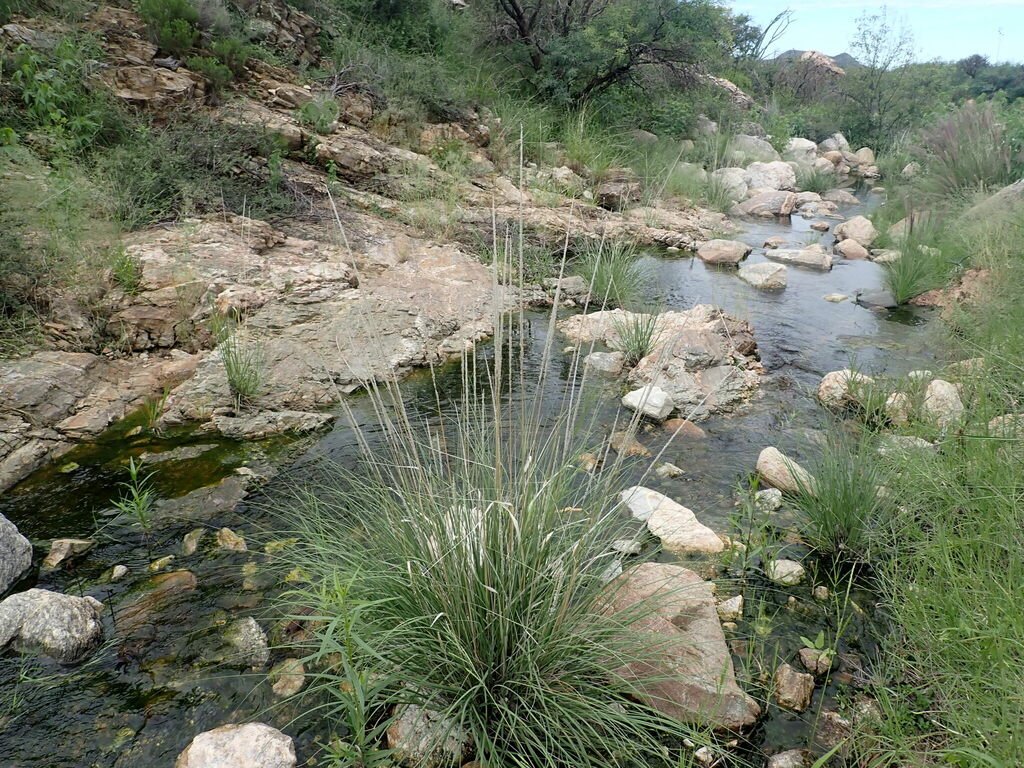Muhlenbergia rigens
Deergrass
Family: Poaceae
Large tufted perennial bunchgrass reaching 4-5’ tall and wide. A good mounding grass for tidy landscapes. In the fall it sends up slender, tan flower spikes. Mostly evergreen, though drought can make plants have more brown leaves. Make sure you plant this in a space that gives it the width it needs to grow (4-5’ wide).
Full to filtered sun, moderate water. Deer Grass is extremely drought tolerant, although the foliage browns out if adequate water is not available in the summer. Hardy to -10°F.
Native grasses are extremely important plants for wildlife: as nesting material for birds as well as native bees and other insects, as habitat for many organisms, and as food: adult insects eat the foliage, granivorous birds depend on many species for seeds, and most grass species are used as larval hosts for many species of butterflies and moths, especially skippers. Many bee species collect the pollen of many species of grasses. Desert tortoises can eat the foliage, and since this is a larger species, they like to hang out under the foliage for shade.
Muhlenbergia rigens on SEINET
Photo by Steve Jones, iNaturalist
Grasses also play an important role in the ecology of soil, and because they are monocots, they can be planted close to other species of plants (the nature of the root systems of monocots renders them less imposing on neighboring plants). They hold soil down and help prevent erosion. Many species are pioneer plants that convert disturbed soils into hospitable places for other plants.
Seeds are ground and eaten as a mush, made into cakes and bread, used as a forage, and used in basketmaking and other weavings, also used ceremonially.
Muhlenbergia is named for Gotthilf Heinrich Ernst Muhlenberg (1753-1815) a clergyman and botanist from Pennsylvania; while rigens is Latin word for stiff referring to the flower spikes. There are 180 species of Muhlenbergia with the greatest number native to the southwestern United States and Mexico; there are also native species in Canada, Central and South America and in Asia.
Deergrass is found in gravelly or sandy canyon bottoms or washes, often in moist soil, less frequently on dry plateaus and meadows; 3,000-8,500 ft. in California, Nevada, Arizona, New Mexico, western Texas, south into southern Mexico.




